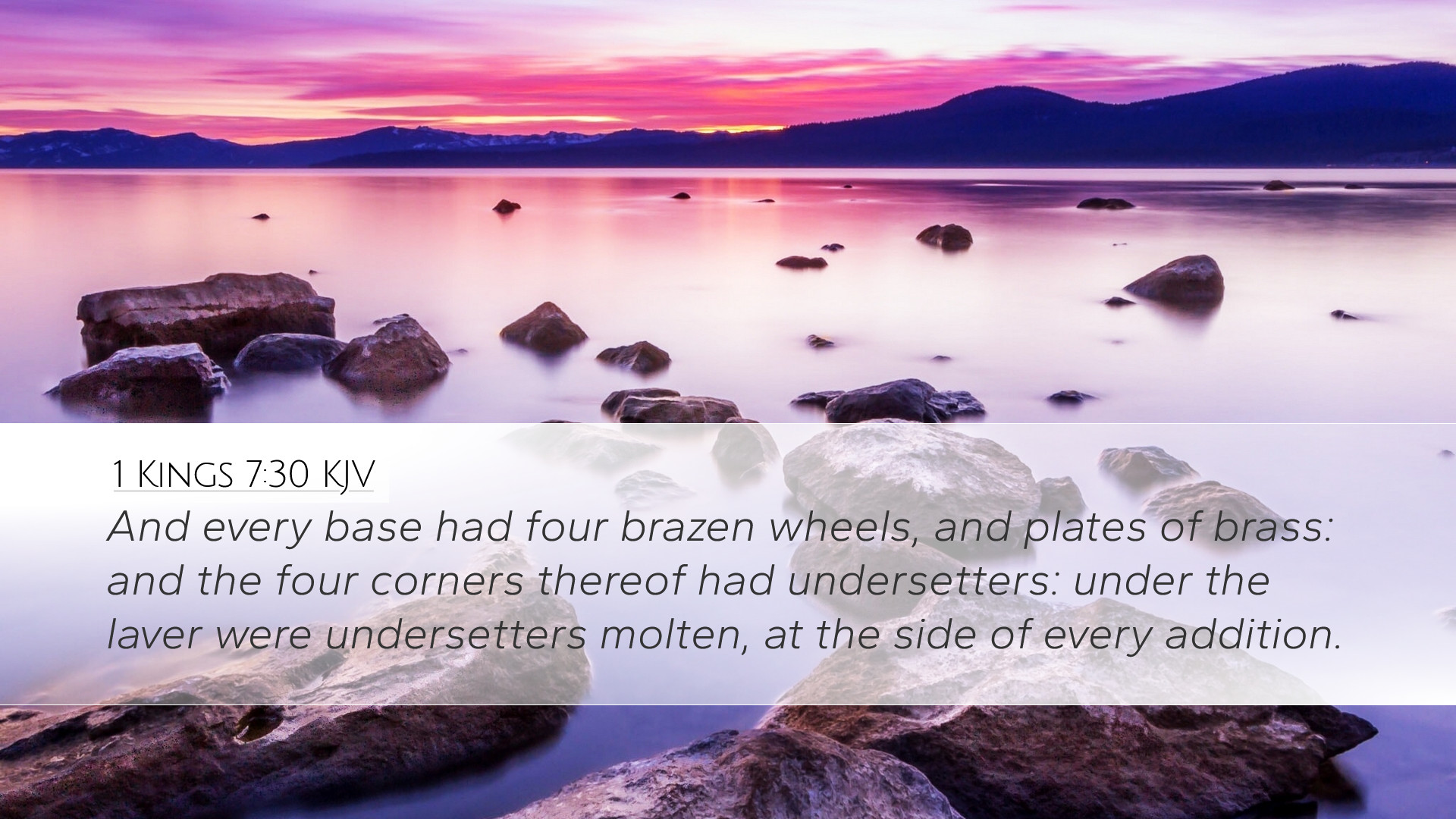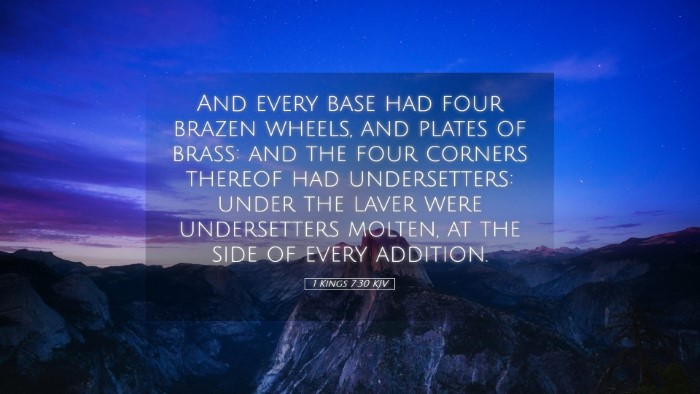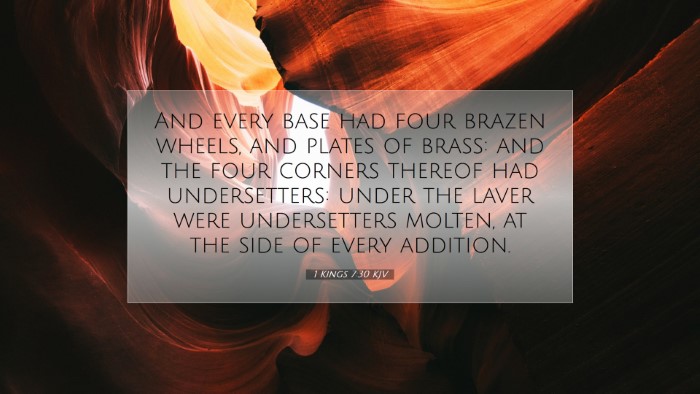Commentary on 1 Kings 7:30
Verse Context: 1 Kings 7:30 states, "And every base was four cubits long, and four cubits broad, and three cubits high." This verse is part of a larger description of Solomon's temple and its furnishings, specifically detailing the various components that contributed to the grandeur and complexity of the temple structure.
Overview of Public Domain Commentaries
In studying 1 Kings 7:30, various ancient commentators provide insights into the richness of the imagery and the theological implications behind the physical structures of Solomon’s temple. Notably, Matthew Henry, Albert Barnes, and Adam Clarke each offer a unique perspective that can enhance our understanding.
Insights from Matthew Henry
Matthew Henry emphasizes the significance of the temple construction, viewing it as a tangible representation of God's presence among His people. He highlights the careful measurements and the grandeur of design as indicative of God's glory and the seriousness with which He takes the worship of His name.
- Dimension and Symbolism: The specified dimensions of the base suggest stability and strength, characteristics that are essential in representing God's eternal nature.
- God’s Order: The architectural precision points to God’s design in creation—everything has its place, suggesting that worship must also be conducted with order and reverence.
Insights from Albert Barnes
Albert Barnes' commentary reflects on the practicality and functionality of the temple constructs, noting that these bases served a practical purpose in supporting the larger elements of the temple.
- Symbol of Support: The bases can be viewed as foundational elements not just physically but spiritually, supporting the entire structure which symbolizes the faith community.
- Reflection of Royalty: The dimensions also reflect the notion of royal dignity and majesty, which is a key theme throughout the narrative of Solomon's reign.
Insights from Adam Clarke
Adam Clarke offers a detailed analysis of the materials and craftsmanship used in the temples’ furnishings, including the bases mentioned in this verse. He invites readers to consider the artistic aspects combined with their theological implications.
- Artistry and Worship: Clarke discusses the emphasis on artistic beauty, implying that creating beauty for God is part of true worship.
- Cultural Context: He notes the historical and cultural significance of such craftsmanship in the Near Eastern context, where the physical representation of sacred spaces played a pivotal role in worship practices.
Theological Reflections
This verse, while seemingly straightforward in describing dimensions, invites deeper reflection on several theological themes:
- Holiness and God’s Presence: The detailed description of the temple's parts indicates the importance of holiness in worship. It was essential for every detail to honor God.
- Community Worship: The temple was not just a place for the king or individuals but served as the community’s center for worship, illustrating the collective nature of faith.
- Legacy of Worship: Each physical element serves as a reminder for future generations about the importance of reverence and dedication in worship practices.
Applications for Today
As pastors, students, theologians, and Bible scholars engage with this text, there are several applications to consider:
- Worship Practices: Reflect on how the details of worship should reflect our reverence for God today. Are our places of worship designed with similar intentionality?
- Community Involvement: Encourage communal involvement in worship and church building, recognizing that the body of Christ is called to together honor God through their collective efforts.
- Dedication to Excellence: As Clarke notes, beauty in worship is important; strive for excellence in how we present ourselves and our places of worship to honor God.
Conclusion
1 Kings 7:30, while detailing the dimensions of a base, opens up a wealth of insights into the nature of worship, community, and God’s presence among His people. By reflecting on the contributions of Matthew Henry, Albert Barnes, and Adam Clarke, readers are encouraged to appreciate the significant details that construct not only the architecture of the temple but the very fabric of worship itself.


